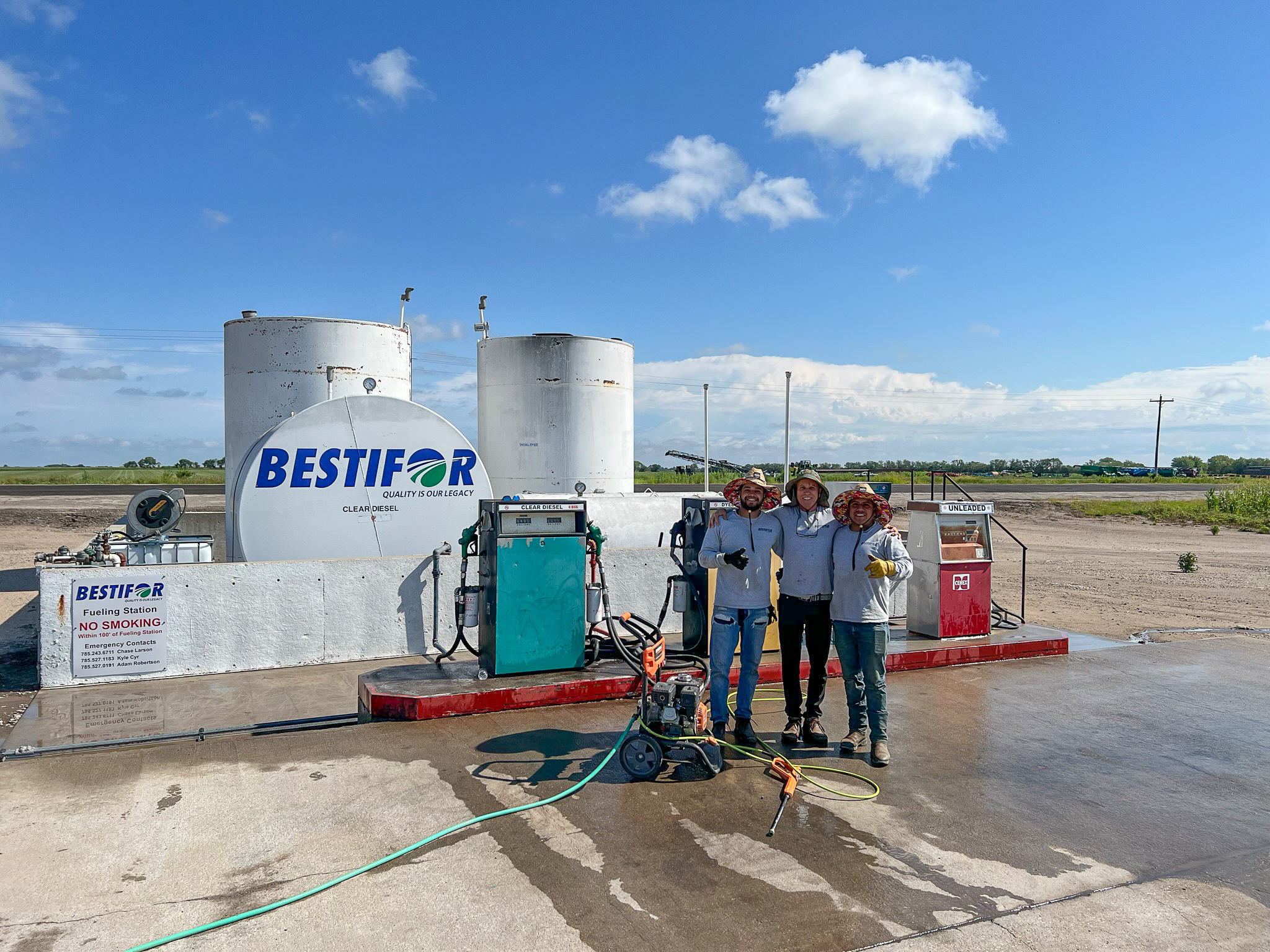A.P. Moller-Maersk A/S, the maritime shipping giant that has been diversifying into land transportation, is betting that driverless trucks will help make deliveries more reliable.
Maersk is experimenting with driverless trucks at its shipping yard in Carson, Calif., and has partnered with Kodiak Robotics Inc. to test autonomous truck runs from Houston to Oklahoma City with a safety driver aboard. Driverless trucks will help Maersk improve on-time performance, said Erez Agmoni, Maersk’s global head of innovation for logistics & services.
Maersk ranks No. 5 on the Transport Topics Top 50 list of the largest global freight carriers and No. 26 on the TT Top 100 list of the largest logistics companies in North America.
“Reliability is a super-important element that we want to add,” Agmoni said in an interview.
Wide variations in transit times are caused by factors such as drivers’ per-day hourly driving limit, Agmoni said. More mundane details — such as the struggle to find increasingly scarce parking spaces before hitting that limit — also have an impact. Autonomous trucks will eliminate those restrictions and reduce the time that a customer’s merchandise is on the road, he said.
Maersk joins FedEx Corp., Uber Freight and others that are testing autonomous big rigs in Texas and surrounding states. FedEx ranks No. 2 on the TT100 for-hire list.
Kodiak, Aurora Innovation Inc. and other companies are using sensors and on-board computers to drive trucks with the promise of reducing accidents, cutting fuel consumption, and operating expensive trucks around the clock instead of about 11 hours a day, which is the limit on driver service hours.
Maersk and Kodiak are running trucks 24 hours a day for four days a week between Houston and Oklahoma City with a stopover in Dallas to swap out safety drivers, who must comply with the limit on driver hours. The round trip is being made four times a week.
For the autonomous trucks Maersk is testing in its shipping yard, the company plans to move the trials to a larger site, to be announced soon, to complete the evaluation. There, Maersk is seeking to use all autonomous trucks first during the night shift, which Agmoni said is the hardest shift to find workers for.
The job requires some ingenuity to get autonomous trucks to carry out the routine work that drivers do, such as opening trailer doors before backing up to the dock and connecting the air-brake hoses and electricity lines between the cab and trailer. Maersk is using vision-equipped robots to perform these tasks, he said.
Kodiak CEO Don Burnette said his company is on track to start operations without any human on board the truck by the end of 2024. Even if it takes longer than that, Maersk wants to be ready to deploy the technology, Agmoni said.
“I don’t know if it’s going to be ready in the next two years, but even if it’s the next three years, it’s better for us to be on the front line of this and be sure that we understand it,” he said.
Bank of America Commodity and Derivatives Strategist Francisco Blanch, meanwhile, expects global oil stocks to decline by 70 million barrels over the next three months, adding support for already firm prices.
“There seems to be no oil rescue on the horizon. The market’s pessimism earlier in the year is now being replaced with supply tightness reality,” Flynn said Oct. 2 in a research note.
Blanch expects the benchmark Brent crude price will average $96 a barrel in the final three months of 2023. That strength means Bank of America expects Brent to average $91 a barrel in the second half of 2023, compared with a prior prognostication of $81 a barrel. Prices were hovering just above $70 a barrel as late as mid-June.
Another factor supporting crude and diesel prices as well as limiting diesel production is how much oil is being drilled.
Benchmark data from oilfield services group Baker Hughes show 623 rigs actively drilling for onshore oil in the U.S. as of Sept. 29, a decrease of seven compared with a week earlier and 142 or 18.6% fewer than 12 months earlier.
There is unlikely to be much help from offshore fields down the line. The Department of the Interior’s auction and leasing program for 2024 through 2029, unveiled Sept. 29, contains a maximum of three potential oil and natural gas lease sales for the Gulf of Mexico — the fewest lease sales since drilling began.
Story by: Thomas Black
Source: ttnews.com

